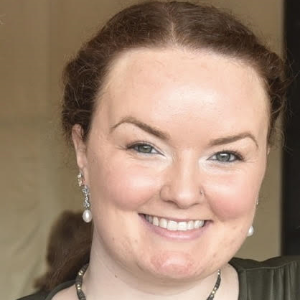Title : miR-590-3p delivery via nanoparticle technology inhibits recurrent GBM tumor growth by targeting multiple oncogenic nodes downstream of TGFBR2
Abstract:
Glioblastoma (GBM) is the most common central nervous system cancer diagnosed in adults. Heterogeneous and aggressive in nature, GBM is often found to resist standard of care (SOC) treatment and is almost guaranteed to recur. Upon recurrence, treatment options are very limited and ineffective. This study aimed to understand resistance mechanisms contributing to GBM recurrence and identify targetable molecular pathways amenable to therapeutic intervention. RNA sequencing obtained from recurrent GBM (rGBM) clinical specimens shows that the TGFBR2::SMAD2/3 pathway is upregulated in rGBM compared to non-tumour samples, and that high levels of TGFBR2 correlates with worse patient outcome and increased therapy resistance. Pharmacologically, this pathway can successfully be inhibited using ITD1, which has been found to not only decrease the expression of both TGFBR2 and pSMAD2, but also CSC markers, while simultaneously increasing the expression of lineage markers in multiple rGBM patient-derived xenografts (PDX) cell lines. Additionally, in vitro, ITD1 can re-sensitize these cells to temozolomide (TMZ), the SOC chemotherapy for GBM. Despite the clear in vitro efficacy of ITD1, the compound was ineffective in orthotopic rGBM mouse models. By combining bioinformatics and knowledge of the drugs’ target molecular pathway, we identified miR-590-3p as a putative inhibitor of the TGFBR2::SMAD2/3 axis and hypothesized that it can target multiple downstream oncogenic nodes within the pathway. In vitro, miR-590-3p effectively reduces cell viability, the CSC phenotype, and re-sensitizes rGBM PDX cell lines to SOC. To deliver this in vivo, poly(beta-amino esters) (PBAE) based nanoparticle technology was used to package miR-590-3p, resulting in over 75% reduction in viable tumour volume concurrent with over 80% increase in the necrotic area of the tumour post treatment. Spatial transcriptomic analysis confirmed the reduction across the entire tumour area for 34/37 of the intended targets. These findings show that nanoparticle technology to deliver miRNAs to brain tumours can provide a novel way for safe and highly efficient targeting of oncogenic pathways to circumvent resistance when no options are available for these patients. The reach of this technology can be applied to all neurological diseases which find the delivery of small molecules to the brain a hinderance to disease treatment and research advancements. This research also highlights the importance of the TGFBR2::SMAD2/3 pathway in rGBM and the CSC phenotype, and that the continued development of targeting this pathway can provide safe and effective ways to treat this disease.
Audience Take Away Notes:
The development of this technology utilizing miRNA delivery via nanoparticles can be widely applicable to almost any area of research which aims to suppress a collection of genes downstream of an important disease-driving pathway. This specific manner of delivery is particularly useful for brain and CNS research due to its ability to cross the blood brain barrier and deliver to nervous system tissues, unlike over 95% of all small molecules. This method of disease targeting can also be used in combination, utilizing multiple different miRNAs in a single delivery, allowing for a wider range of inhibition. This specific use of miRNA and nanoparticle technology to target rGBM in vivo demonstrates the importance of this oncogenic pathway in reference to this disease and provides a way to target the specific recurrent tumor which currently has no SOC protocol for treatment.




